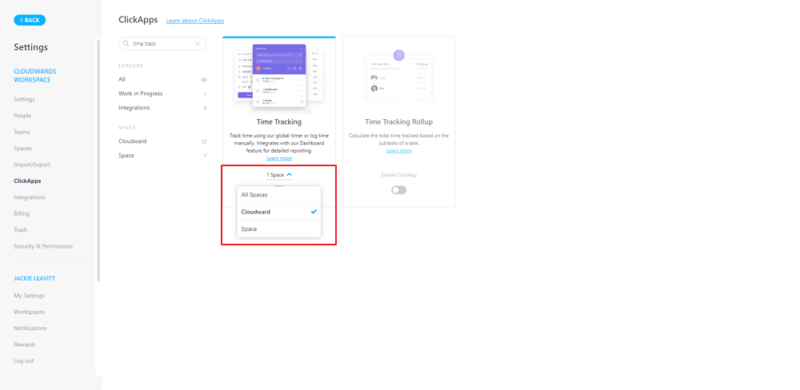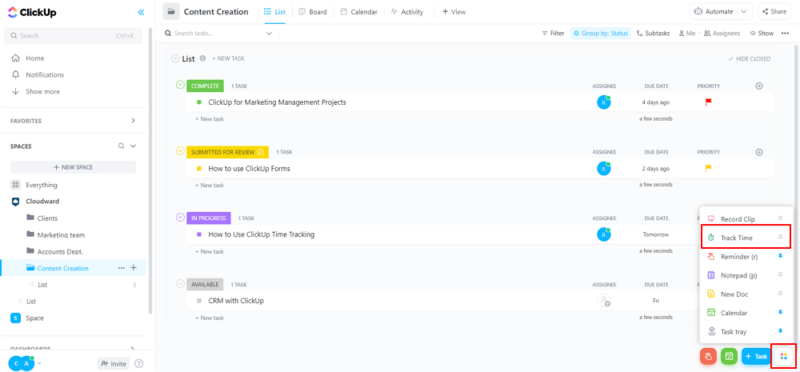How to Use ClickUp Time Tracking in 2025: A Beginner’s Guide
ClickUp time tracking tool has a two-fold utility. You can set project deadlines and measure your team’s productivity, in addition to tracking billable hours for your clients. Keep reading to get started.
Proper time management is important for every business. The ClickUp time tracking tool helps you put this critical resource to best use. Whether you’re meeting milestones on projects or tracking how long your team spends on any task, you can track time accurately with the help of ClickUp’s time tracking feature. Our experts tested the feature and how it works to bring you this guide.
Key Takeaways: Track Time in ClickUp
- ClickUp’s time tracker is an easy-to-use feature that comes with additional customizations to suit your requirements.
- You can use the ClickUp time tracker to track the time taken up by different tasks, and for more accurate tracking of billable hours.
- You can use ClickUp integrations to connect numerous other tools and streamline your business’ operations.
- The basic features of ClickUp time tracker are available in the free plan, but the business plan is reasonably priced and provides access to advanced custom features.
ClickUp comes with a wide range of features suitable for all project management needs. It’s a full featured and comprehensive tool; as such, there can be a bit of a learning curve. In this guide, we’ll walk you through how to track real time activities with ClickUp time tracking. If you don’t have a ClickUp account yet, then check out our ClickUp review to find out if it’s the right time tracking solution for you.
Is ClickUp Time Tracking Available on Every Plan?
The basic time tracking feature is available on all of ClickUp’s plans. However, certain advanced features, like the timesheet and time reporting widgets, time estimates and billable reports are available only in business plans and above.
If you are a startup working with a small team and limited work needs, you can start with the free plan. Later, as your business grows, you can switch to one of the paid plans with more sophisticated time tracking tools.
Avoid Costly Project Management Mistakes – Get Free Tips Today!

- Discover 10 fundamentals of project management
- Understand step-by-step plans for PM execution
- Learn tips to avoid 5 common mistakes by beginners
How to Enable ClickUp Time Tracking for Workspaces
Let’s begin with the steps to enabling time tracking and then work our way through its features. Time tracker is a ClickApp feature that needs to be enabled before use.
- Accessing ClickApps
On the homepage of your ClickUp account, click on the profile/workspace icon at the bottom left of your screen, and click the ClickApps option. You can also access ClickApps by clicking on the workspace settings. Keep in mind you have to be a workspace owner or admin to manage ClickApps.
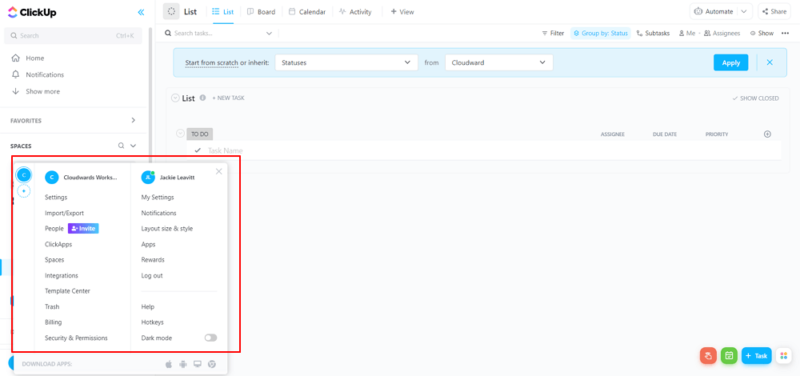
- Enabling Time Tracker
Scroll through the apps to find time tracking, or click on the search bar and type “time tracker.” Enable the option by clicking on the toggle at the bottom of the feature card.
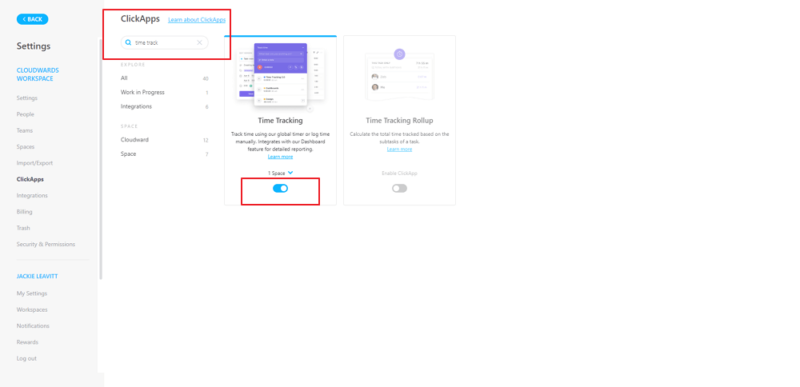
How to Enable ClickUp Time Tracking for Individual Spaces
As a project management tool, ClickUp is handy for increasing team productivity. You can customize your projects and workspaces on an individual level to suit your specific requirements.
After enabling the time tracker, you can select specific spaces, from your larger workspace as a whole, where you would like to use the time tracker. It only takes a couple of extra clicks to enable a dedicated time tracking tool for individual spaces.
How to Access ClickUp Time Tracking
You can access the time tracking feature on all the views available from the header menu. However, the method to access them differs depending on the view you opt for.
The time tracking columns are usually hidden by default. Here, we’ll show you how you can view time tracking regardless of which view you choose.
From the List View
- Show the Column Field
To see individual time entries of each task alongside the other fields on your screen, you need to make sure the time column is showing. To do this, click on the “+” (add column) icon on the right side of your screen.
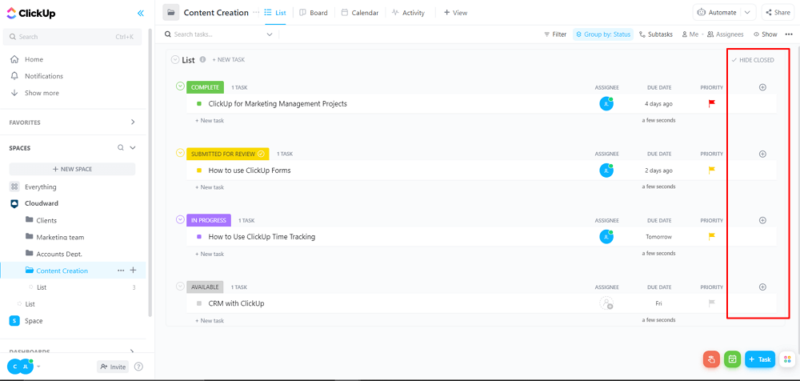
- Select the Time Tracked Option
Click on the “Show/Hide” tab and scroll or search for the “Time tracked” option. Enable by clicking on it.
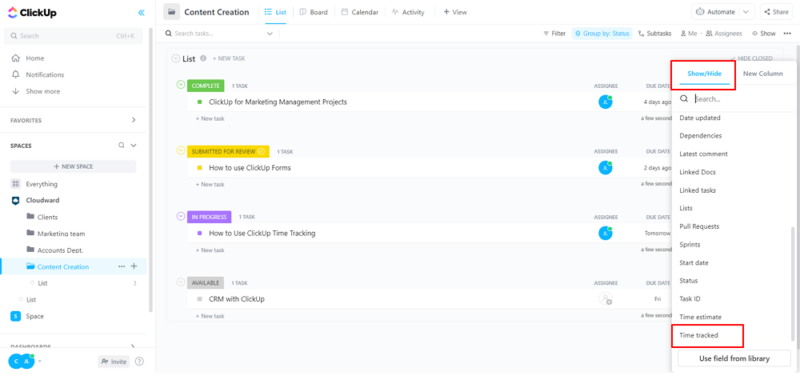
From the Board/Calendar View
- Enable Time Tracker
The time tracker tool accessibility is the same for both the board and calendar view.
Right below the header, look for the “Show” icon on the right side of the screen. Click on it, and view the time tracking field by enabling the toggle labeled “Show time tracker.”
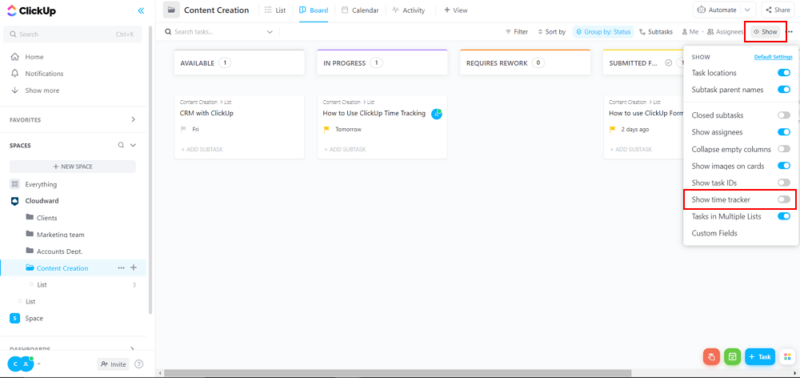
From the Chrome Extension
- Install the Extension
Open the ClickUp Chrome extension page, and click on “Install Chrome Extension.”
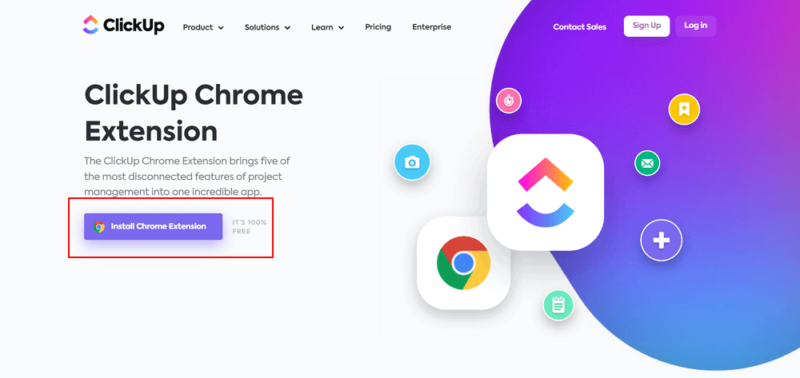
- Add the Extension to Chrome
You will be redirected to a new page with a button labeled “Add to Chrome.” Click on this button and then confirm your download via the pop-up by selecting “Add extension.”
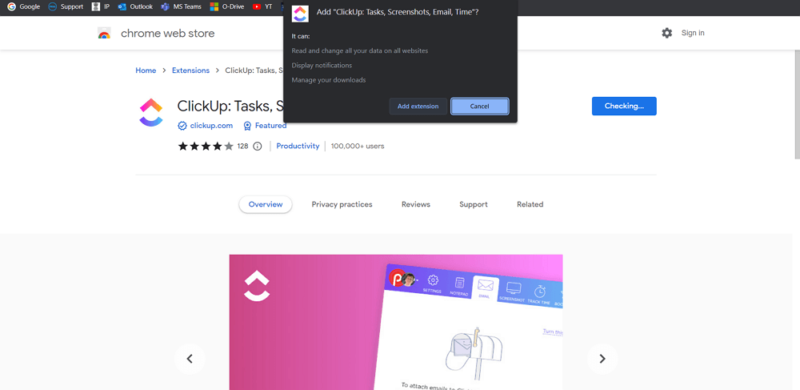
- Configure the Extension in ClickUp
The newly added extension can be found by clicking on the puzzle icon on the right side of the Chrome bar.
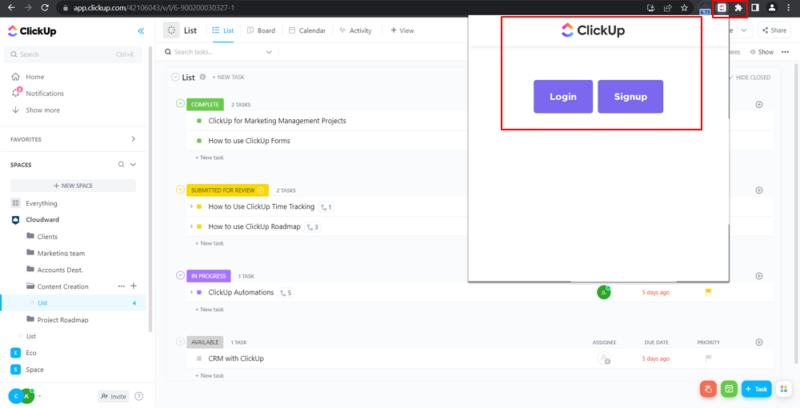
- Connect Your Workspace
Once the extension is installed, you can connect it to a specific workspace by selecting the workspace and clicking on the “Connect Workspace” button. Pin the extension by clicking on the pin icon in the extensions tab for easy access.
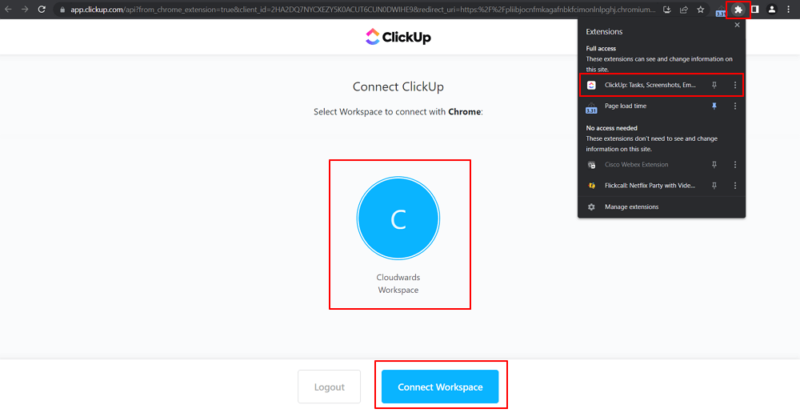
- Start Time Tracking
Once you’ve connected the specific workspaces to the time tracking extension, you can start to track time by selecting a task and clicking on the start button.
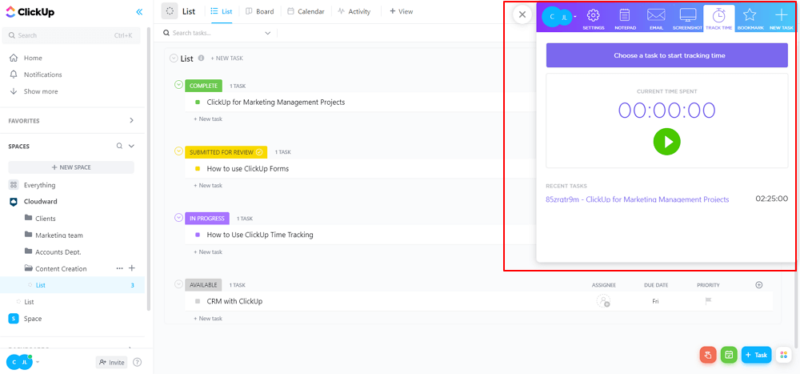
From the Quick Action Menu
What To Do When ClickUp Time Tracking is Enabled
Once you have enabled the time tracking ClickApp, you can use your owner or admin profile to limit user access to the time tracking feature. You can also create and edit time entries for each individual task. This can be done in three ways:
- Timer Click on the start button, and you can control the timer by manually pausing and continuing it if you want to track the time specifically to the extent of task performance.
- Manual You can manually enter the total time taken for a particular task.
- Range You can input a designated start and end time for a task in order to specify time parameters. This is great for things like scheduled meetings.
You can also add descriptions, categorize the tasks with labels and add notes. To track billable hours, click on the “$” (billable) icon to make the marked task billable.
Set Up Third-Party Integrations
ClickUp’s time tracking tool is also easy to use with other apps. You can create ClickUp reports and accurately calculate the amount of time spent on tasks and projects using integrations.
The ClickUp time tracker also integrates with other popular time-tracking apps such as Harvest, Toggl and Everhour. If you’re already using a time tracking platform outside of ClickUp, this is a great way to synchronize your team’s efforts.
Stay on top of your team’s communication by integrating with apps like Slack, Discord or MS Teams. You can also schedule meetings directly from ClickUp with Google Hangouts and Zoom. If you use other project management tools like Asana, monday.com or Basecamp, you can use ClickUp to import and manage your data more effectively across all of them.
Why Use ClickUp Time Tracking?
You should use ClickUp time tracking if you want to improve overall time-based productivity or if you run a business that run heavily on hour-based billables. ClickUp is an efficient and customizable time tracking tool that’s perfect for managers, teams or business owners.
You can use ClickUp through your web browser, or check reports on the go with ClickUp’s mobile app.
Increase Efficiency
ClickUp’s time tracker helps you increase efficiency by identifying which activities are consuming more time. This can help you prioritize tasks with a higher time-to-value ratio, and redirect your team’s energy in the right direction to improve your business’ overall output.
Improved Delivery Times
ClickUp time tracking lets you stay on top of all business activities under your command. You can receive alerts on overdue tasks and take appropriate actions to avoid missed deadlines in the future. ClickUp’s time blocking templates are also useful in breaking your workday into manageable batches for deep work.
More Accurate Project Estimates
With ClickUp’s native time tracking tool, you can avoid undercharging or overcharging your clients by tracking billable hours, listing and prioritizing tasks for completion and creating accurate reports of the time spent on different tasks and activities. This can help your sales team formulate more accurate project quotes for the future, allowing your business to build better pricing strategies.
Creating a Time Tracking Policy
Before implementing ClickUp’s time tracker, you should consider formulating a time tracking policy to clearly define the terms, and explain the do’s and don’ts, to your employees.
Make your time tracking policies definitive and precise so that your team members can easily understand how they are supposed to track time. Illustrations and examples can help your employees understand what tasks and activities can be tracked, and the type of tracker that should be used for each kind of time entry. Providing training is also a good approach.
You should also mention the purpose and extent of time tracking. Let your employees know that regardless of their working location, the time tracked would only be for business activities during specified working hours. Specifying that the time tracking won’t invade their personal space can help put their minds at ease.
Having a strong and clearly defined set of policies for time tracking can help eliminate any confusion among your employees, while legally protecting the interests of your business. It can also mitigate the amount of time spent training employees on the tool.
Final Thoughts
ClickUp is a piece of easy-to-use project management software that comes with one of the most efficient and versatile time tracking tools. The free plan gives you access to the most basic time tracking features, but if you’d like to use the time tracking widgets, billable hours and timesheets, you should consider upgrading to the business plan.
If you’re getting started with project management, we compiled comprehensive guides on how to use ClickUp emails, how to make ClickUp roadmaps and how to create ClickUp recurring tasks.
We hope this guide helped you get started with the ClickUp time tracker. Which app do you use for time tracking? Did you notice any specific feature you like? Would you like any other feature to be added? Comment below to share your thoughts. Thank you for reading and happy time-tracking!
FAQ
Yes, you can track hours and minutes in three different ways with ClickUp: using the timer, manual entry and through a pre-defined range.
Access ClickApps from the settings page of your workspace and enable “time tracking.” Select your desired view from the header, and unhide the “time tracked” column to start using the time tracker.



